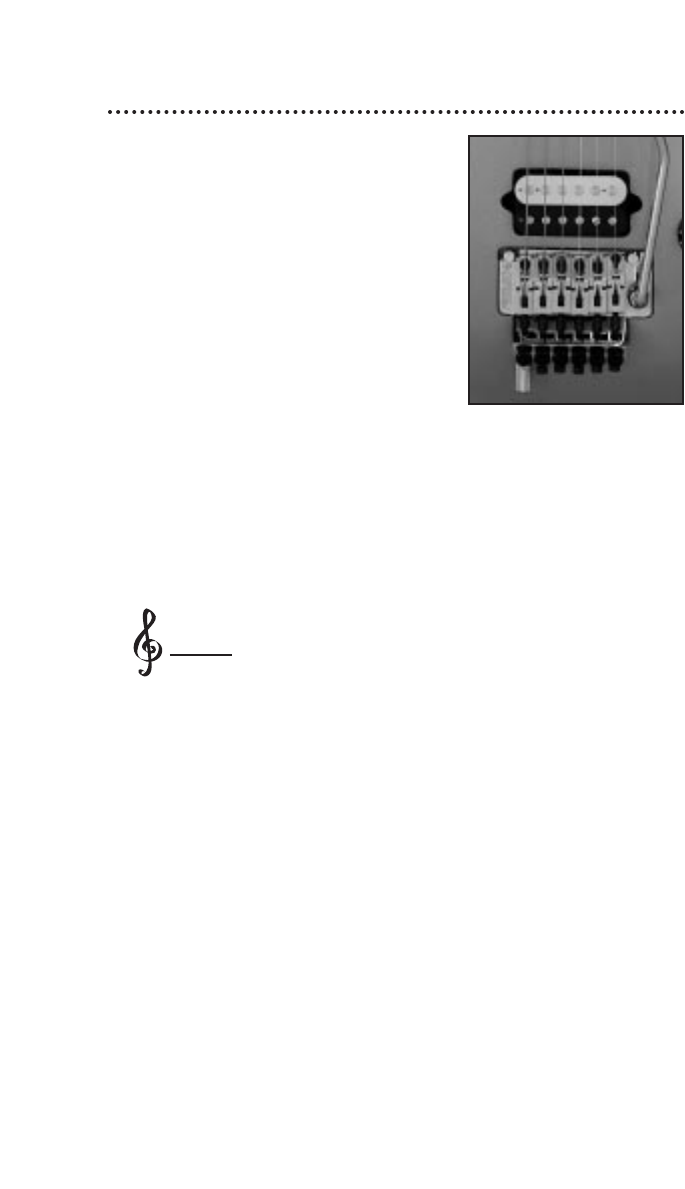
12
String Intonation
Accurate string intonation set-
tings ensure that your instrument
will play in tune at any point on
the neck. Although “perfect into-
nation” is an impossibility with a
fretted instrument, the proper
adjustments will maximize the
accuracy of individual notes up
and down the neck.
Intonation is set by comparing
the pitch of an open string to
the pitch of the same string
when played one octave higher
at the 12th fret. The actual “vibrating length” of that string
is varied until the notes are both at the correct pitch. The
vibrating length of the string is altered by adjusting the
individual saddles either
forward or backward, depending on whether the fretted
note is sharper or flatter in pitch than the open note.
This process should always be performed with
new strings. Intonation problems can often
result from worn strings. It is often difficult for
the untrained ear to determine when the open note and the
fretted note are at precisely the same pitch. Some players
find that comparing the 12th fret harmonic of the string
(rather than the open note) to the fretted note is much
easier.
A harmonic is played by plucking the string with the right
hand while touching the string with the left index finger (as
lightly as possible) directly above the 12th fret. The left fin-
ger is drawn away as quickly as possible after the string is
plucked, producing a ÒchimeÓ effect. This chimed note is
then compared to the fretted note. For greater ease and
accuracy, we recommend one of the many types of elec-
tronic guitar tuners that are available from most music
stores.
1. Ensure that the torsion rod and string-height settings
are accurate and the strings are new.
2. Tune the instrument to standard (A-440) pitch.
3. Hold the instrument in a normal playing position or
place the guitar on a clean, flat surface so that the
body is in contact with the work surface. Any pressure
on the neck will affect intonation settings.
Note


















